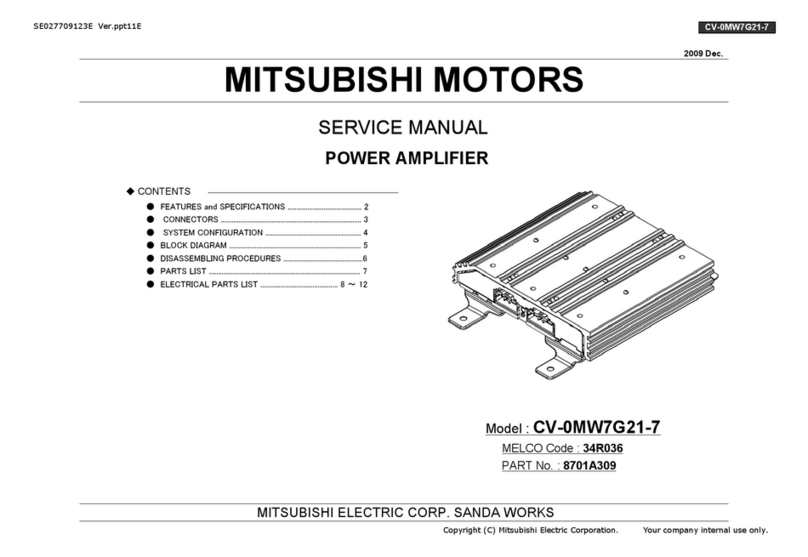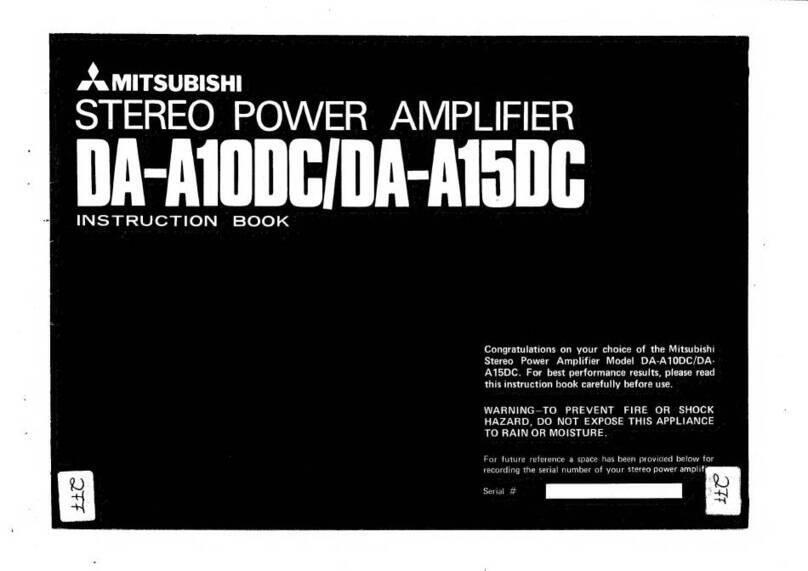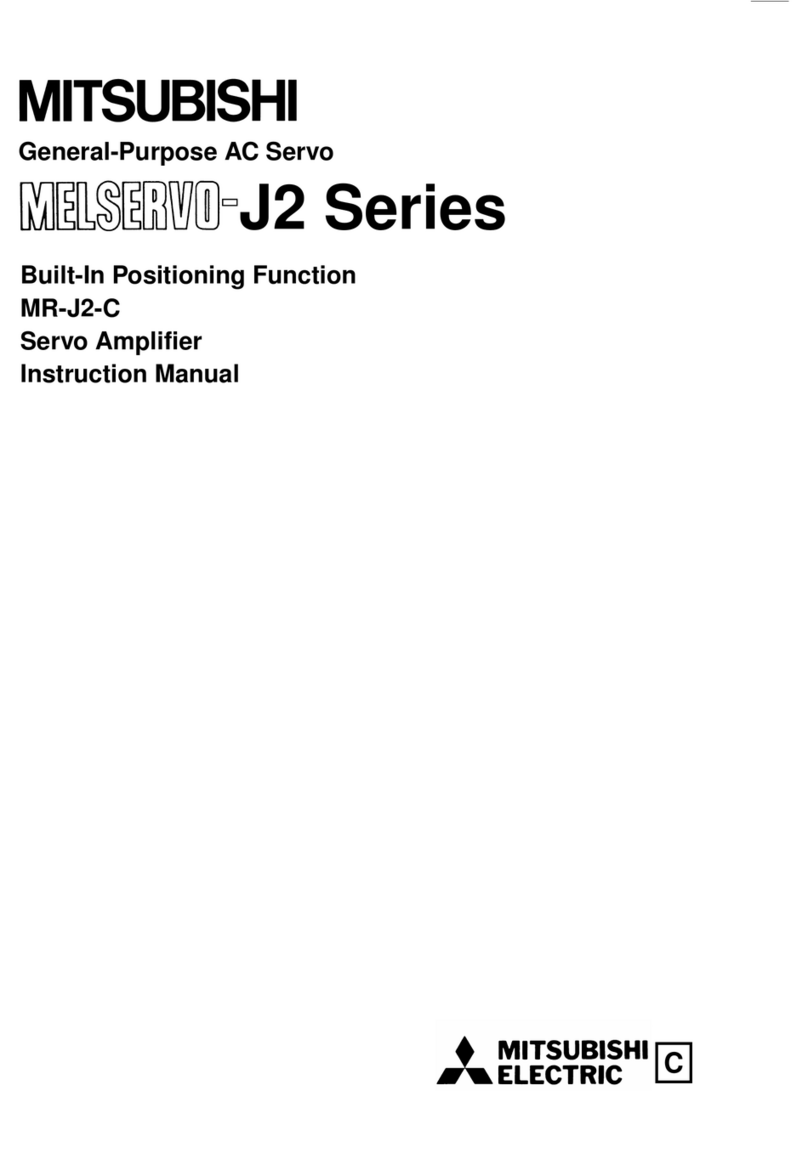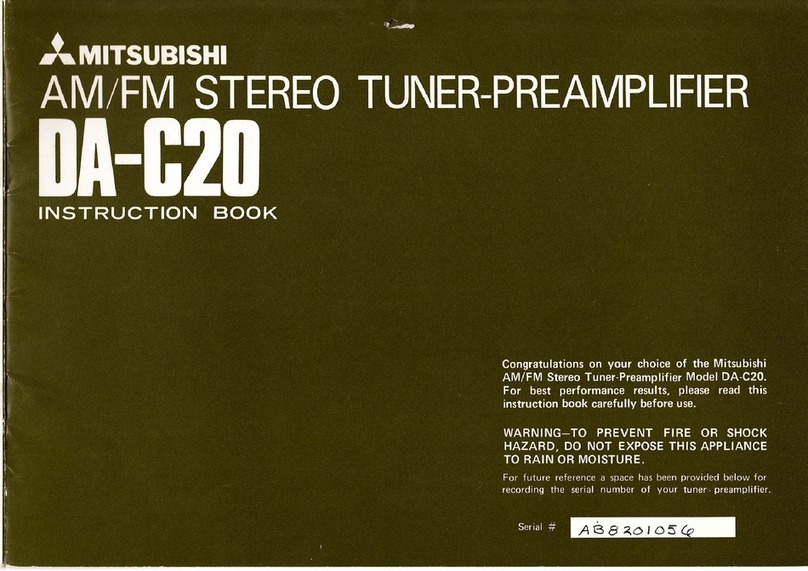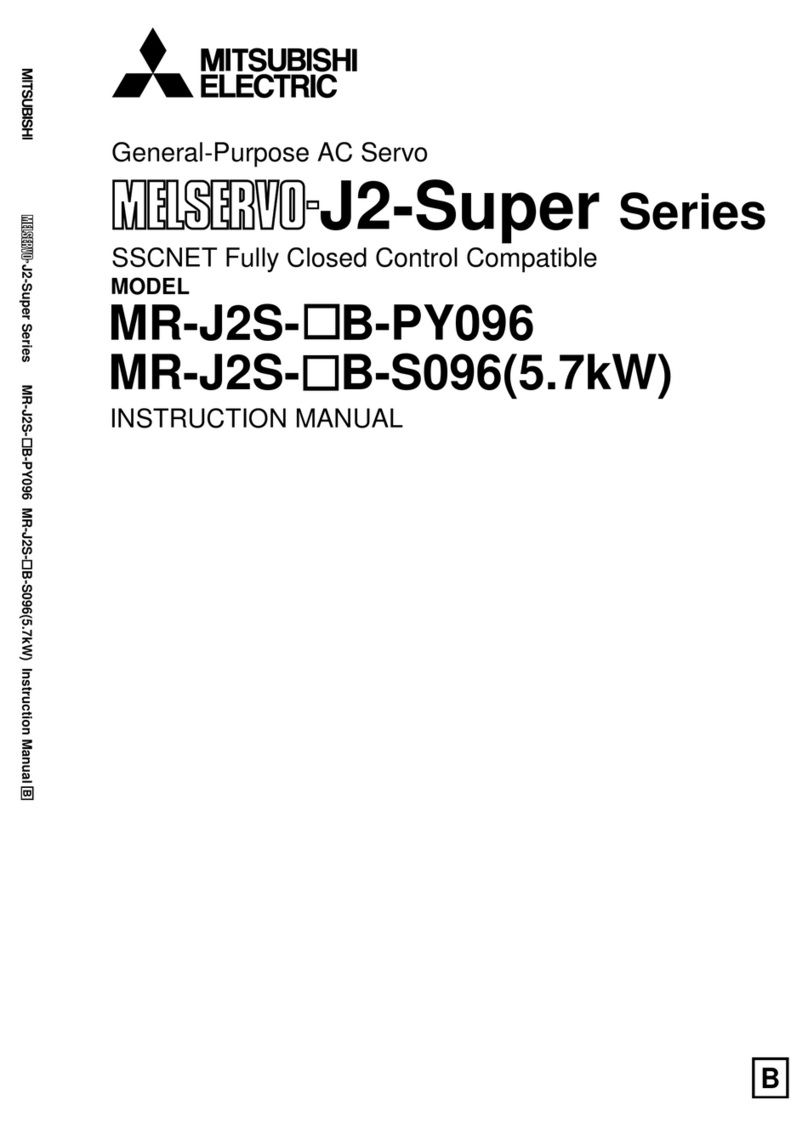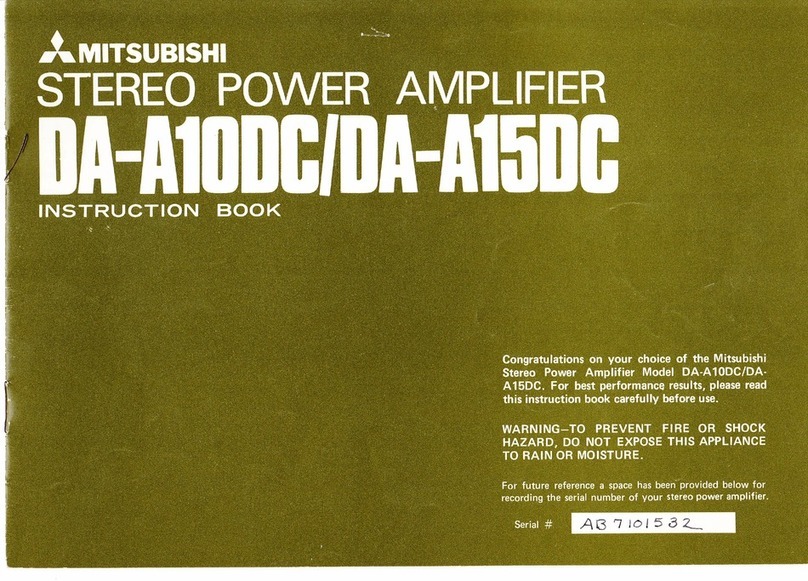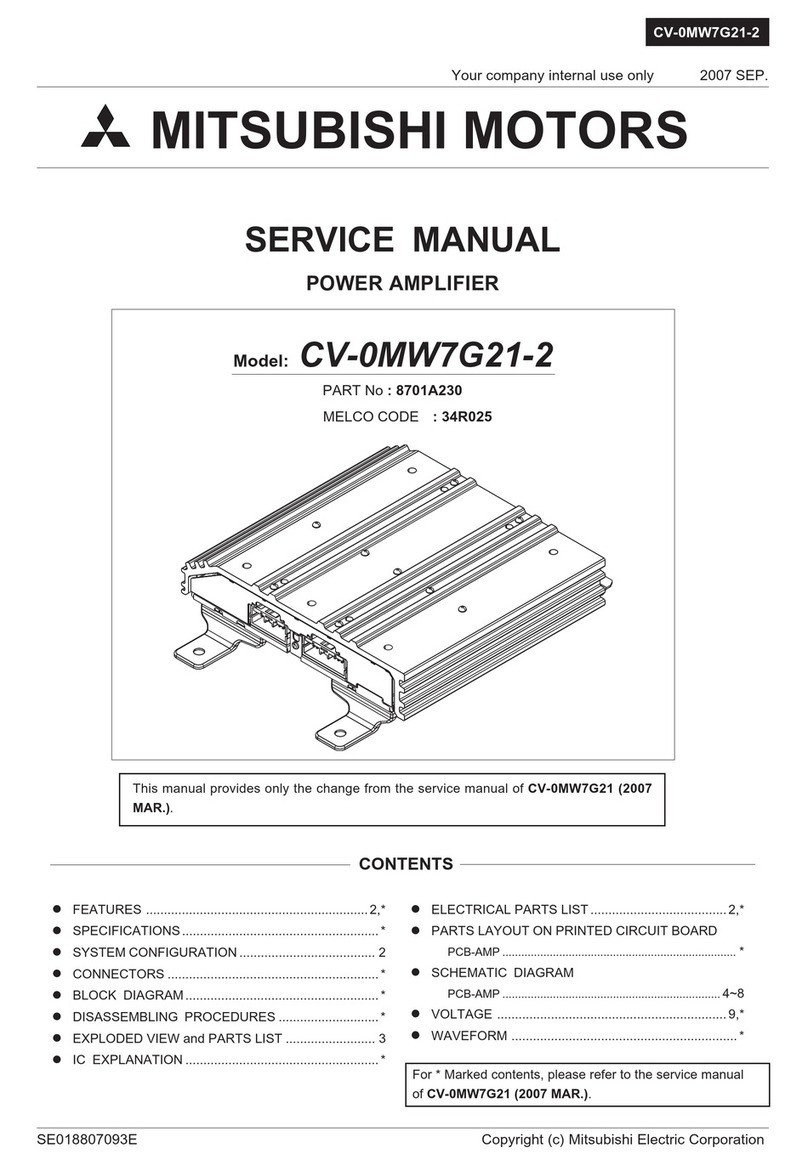
1
CONTENTS
1. FUNCTIONS AND CONFIGURATION 1- 1 to 1-44
1.1 Summary........................................................................................................................................... 1- 1
1.2 Function block diagram..................................................................................................................... 1- 2
1.3 Servo amplifier standard specifications ............................................................................................ 1- 9
1.4 Combinations of servo amplifiers and servo motors ....................................................................... 1-13
1.5 Function list...................................................................................................................................... 1-14
1.6 Model designation............................................................................................................................ 1-16
1.7 Structure .......................................................................................................................................... 1-17
1.7.1 Parts identification..................................................................................................................... 1-17
1.7.2 Removal and reinstallation of the front cover............................................................................ 1-29
1.8 Configuration including peripheral equipment ................................................................................. 1-31
2. INSTALLATION 2- 1 to 2- 6
2.1 Installation direction and clearances ................................................................................................ 2- 2
2.2 Keep out foreign materials................................................................................................................ 2- 3
2.3 Encoder cable stress ........................................................................................................................ 2- 4
2.4 Inspection items................................................................................................................................ 2- 4
2.5 Parts having service lives ................................................................................................................. 2- 5
3. SIGNALS AND WIRING 3- 1 to 3-70
3.1 Input power supply circuit ................................................................................................................. 3- 2
3.1.1 200 V class................................................................................................................................. 3- 3
3.1.2 400 V class................................................................................................................................. 3- 8
3.2 I/O signal connection example......................................................................................................... 3-11
3.2.1 Position control mode................................................................................................................ 3-11
3.2.2 Speed control mode .................................................................................................................. 3-14
3.2.3 Torque control mode ................................................................................................................. 3-17
3.3 Explanation of power supply system ............................................................................................... 3-20
3.3.1 Signal explanations ................................................................................................................... 3-20
3.3.2 Power-on sequence .................................................................................................................. 3-21
3.3.3 Wiring CNP1, CNP2, and CNP3 ............................................................................................... 3-22
3.4 Connectors and pin assignment ...................................................................................................... 3-25
3.5 Signal (device) explanations............................................................................................................ 3-28
3.6 Detailed explanation of signals........................................................................................................ 3-37
3.6.1 Position control mode................................................................................................................ 3-37
3.6.2 Speed control mode .................................................................................................................. 3-42
3.6.3 Torque control mode ................................................................................................................. 3-44
3.6.4 Position/speed control switching mode..................................................................................... 3-47
3.6.5 Speed/torque control switching mode....................................................................................... 3-49
3.6.6 Torque/position control switching mode.................................................................................... 3-51
3.7 Forced stop deceleration function ................................................................................................... 3-52
3.7.1 Forced stop deceleration function (SS1)................................................................................... 3-52
3.7.2 Base circuit shut-off delay time function ................................................................................... 3-54
3.7.3 Vertical axis freefall prevention function ................................................................................... 3-55
3.7.4 Residual risks of the forced stop function (EM2) ...................................................................... 3-55
